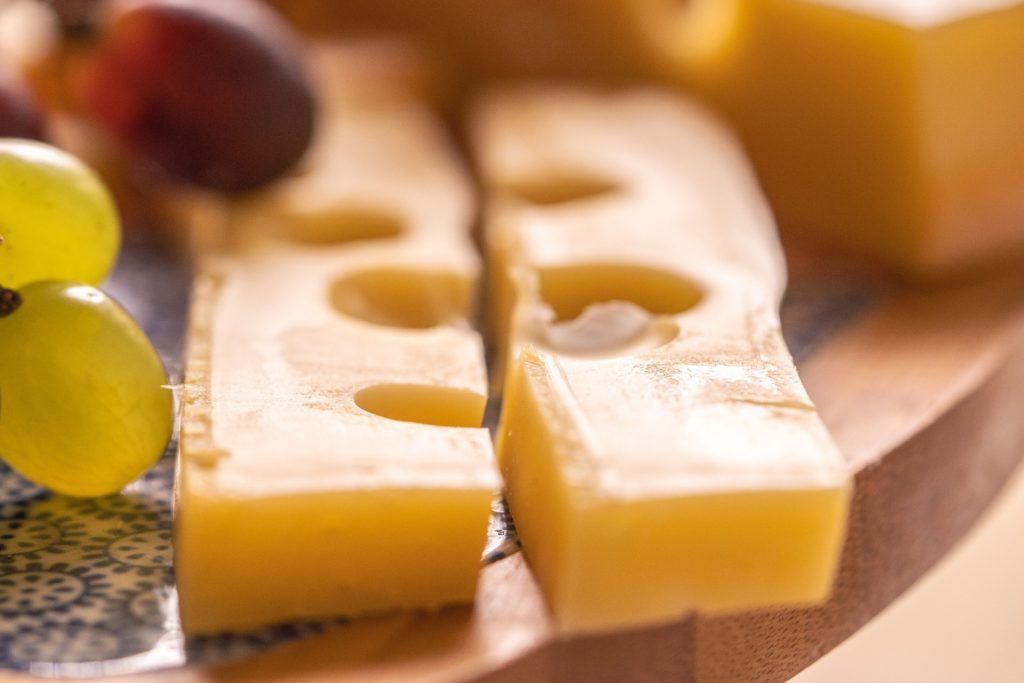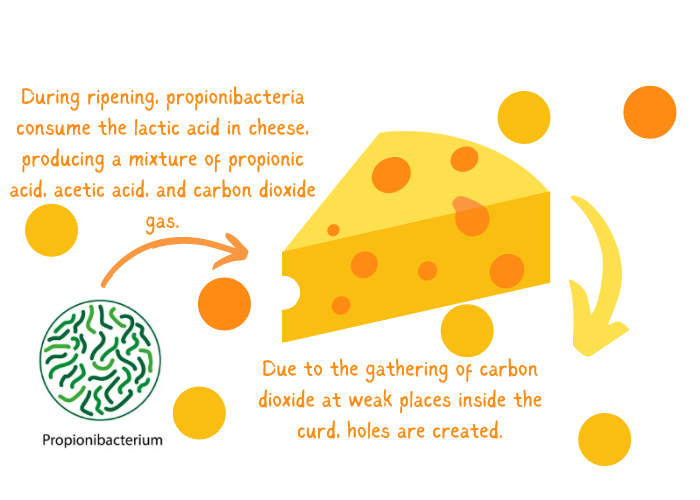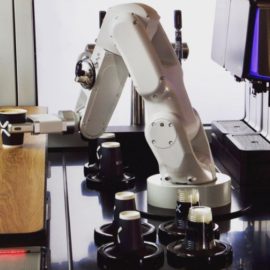
Cheeses come in various shapes, texture, color, and taste. Perhaps, the most iconic among these cheeses is Emmental or Swiss cheese because of its distinct holes (called “eyes” as well). Well, during its early days, the holes of Swiss cheese were not intended to be there. In fact, cheese makers did not want them in their product.
But studies have proven that these holes can be used as an indication of the cheese’s quality and maturity. In fact, quality control of Swiss cheese making also includes the inspection of the formation of holes. Without these eyes, cheesemakers would call the cheese “blind”. Fortunately, the size of the holes can be controlled with proper acidity, temperature, and length of storage.
But why does Swiss cheese have holes? Have you ever wondered about this?
You might also like: Food Science: What Is Processed Cheese?
To answer this question, let’s take a look at how Swiss cheese is made.
MAKING SWISS CHEESE
One of the first steps in Swiss cheese making is creating curds from milk. Like most hard cheeses, rennet, a proteolytic enzyme can be used to form curd for Swiss cheese. Rennet acts by breaking down a particular peptide link in milk protein. The milk coagulates to produce curds as a result of the hydrolysis reaction.
Lactic acid bacteria also aids in curdling the milk, resulting in a gelatinous-like substance.
After curdling, an equipment called harp is used to cut the curd into pieces. This separates the whey from the curds. The size of the pieces determines the texture of the final cheese. To remove more whey, the curds are heated to about 125°F (52°C). The temperature depends on the texture of the final product. The higher the temperature, the harder the cheese.
The curds remaining are then molded into wheels. The molds are perforated to allow the remaining whey to drain. Traditionally, the cheese is pressed multiple times allowed to stand overnight. Modern Swiss cheese making involves using a hydraulic press to press the molds for 20 hours.
You might also like: The Mold Penicillium Roqueforti And Blue Cheese
Pressing cheese removes any remaining moisture from the curd. It also enhances the final texture, resulting in a firm rind on the outside and a smooth finish inside. The cheese is pressed into the customary wheel shape and prepared for aging.
After pressing, the cheese is placed and soaked in a brine bath. Soaking in brine lasts for several hours up to 48 hours. The high salt content of the brine helps removes the remaining whey. And as the cheese absorbs salt, it solidifies and cheese rind forms. The salt adds flavor to the cheese. And more importantly, the salt brine inhibits the growth of unwanted microorganisms.
MATURATION AND HOLE FORMATION
Then, the cheese is moved to a fermentation cellar. Inside this cellar, the cheese allows to sweat and is turned regularly. Afterwards, the cheese is transferred to another cellar, where the temperature is cooler (around 53°F). This particular cellar possesses conditions that allow the favorable physical, chemical, and microbiological changes in the cheese to take place. Cheese maturation, also called affinage, lasts for several days, months, or even years, depending on the cheese.
You might also like: What Is Colby Cheese? How Is It Made?
During maturation of Swiss cheese, the changes that take place include the development of texture, flavor, aroma, and color. Visually, Swiss cheese is distinct because of the holes. And no, mice do not eat the cheese.
In cheese production, two strains of bacteria may be used. The first one is a starter bacteria, which is responsible for the production of lactic acid bacteria. The second is the non-starter bacteria (or ripening bacteria). The finishing bacteria depends on the type of cheese. In the case of Swiss cheese, Propionibacterium shermanii is an important bacterium in Swiss cheese culture as it is responsible for the formation of holes.

During ripening, propionibacteria consumes the lactic acid in cheese, producing a mixture of propionic, acetic acid, and carbon dioxide gas. Due to the gathering of carbon dioxide at weak places inside the curd, holes or eyes are created. The holes of Swiss cheese vary in size, from medium to large (1 to 3 cm). To better control hole formation, a culture of selected propionibacteria is used for a more controlled propionic acid fermentation. Spontaneous fermentation only leads to irregular hole formation, and splits and cracks are more likely to occur.
Other types of bacteria used in Swiss cheese are Lactobacillus and Streptococcus salivarius subspecies. A common characteristic of finishing bacteria is they flourish in lower, acidic pH environments established by starting cultures. Many of these bacterial strains can withstand the higher temperatures required to finish the cheese making process.
Another benefit of finishing bacteria is they produce other flavors as they consume fat, protein, and sugar. For example, milk fats are damaged in the copper cauldrons, and the freed fatty acids are converted to esters and lactones with pineapple and coconut scents.


